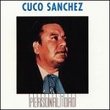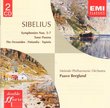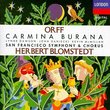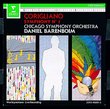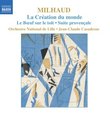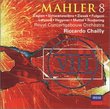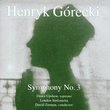| All Artists: Toru Takemitsu, Esa-Pekka Salonen, John Williams Title: Takemitsu: To the Edge of Dream / Folios for Guitar / Toward the Sea / Transcriptions for Guitar Members Wishing: 1 Total Copies: 0 Label: Sony Original Release Date: 1/1/1992 Re-Release Date: 1/28/1992 Genres: Pop, Classical Styles: Vocal Pop, Opera & Classical Vocal, Chamber Music, Forms & Genres, Concertos, Historical Periods, Modern, 20th, & 21st Century, Instruments, Reeds & Winds, Strings Number of Discs: 1 SwapaCD Credits: 1 UPC: 074644672022 |
Search - Toru Takemitsu, Esa-Pekka Salonen, John Williams :: Takemitsu: To the Edge of Dream / Folios for Guitar / Toward the Sea / Transcriptions for Guitar
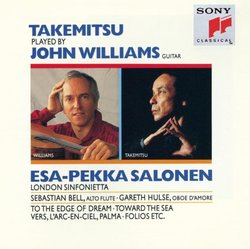 | Toru Takemitsu, Esa-Pekka Salonen, John Williams Takemitsu: To the Edge of Dream / Folios for Guitar / Toward the Sea / Transcriptions for Guitar Genres: Pop, Classical
|
Larger Image |
CD DetailsSimilar CDs
Similarly Requested CDs
|
CD ReviewsAustere, Humble Beauty 06/21/2000 (5 out of 5 stars) "I would like to encourage the sale of this CD for selfish reasons: I would like for it to remain in print for years to come so that I might purchase it at any time for my guitarist friends. The music Takemitsu composed for guitar--nearly ALL of his music, in fact--cannot be praised enough. This is exquisite, austere, humble music that is even more subtle and carefully-wrought than, say, Debussy's best piano music. If you like Debussy, there is a good chance you will love Takemitsu--not so much for the harmonic flavor, etc., as for the admirably restrained aesthetic attitude (quite unlike the bombast of other contemporary composers such as Rautavaara). "Toward the Sea" is one of those small masterpieces of understatement that one listens to again and again (Takemitsu also re-wrote it for harp and flute + string orchestra). And the arrangements of Lennon/McCartney, etc., are revelations. If you like this music, check out some of Takemitsu's other work--e.g., his gorgeous "From Me Flows What You Call Time" (you'll just have to pardon the odd titles!). There are elements of dodecaphonic expressionism in certain of his works that are not altogether to my taste (e.g., in "A Flock Descends into the Pentagonal Garden"), but I can't think of another contemporary composer whose oeuvre matches Takemitsu's in visionary refinement. If this is the direction music is taking, it is a great time to be alive indeed." Not very impressive material, and some of what's good is ava Christopher Culver | 02/26/2007 (2 out of 5 stars) "This Sony disc features several of Toru Takemitsu's guitar-centric works in performance by John Williams and the London Sinfonietta conducted by Esa-Pekka Salonen. All of the works here, with the possible exception of the "Folios", are from Takemitsu's late period when he had left behind avant-garde stylings in favour of slow drifts of timbre. "To the Edge of Dream" for guitar and orchestra (1983) is a typical example of Takemitsu's late style. Gentle rising waves of orchestral material, sprinkled with light percussion, are contrasted against the soloist's somewhat faster remarks. While the guitar part is actually quite clever and engaging, the ensemble writing succumbs like most other orchestral works of this late period to a stylistic stagnation. That's true also of "Vers, l'arc-en-ciel, Palma" for oboe d'amore, guitar and orchestra (1984), a homage to the Catalan painter Joan Miro. Again while the solo guitar part, and even more so the oboe part are highly engaging, the stale orchestral writing drags everything down. The only late Takemitsu orchestral works I've found satisfying are those collected on Deutsche Grammophon's QUOTATION OF DREAM disc, everything else has been a disappointment. The three "Folios" for guitar (1974) are fairly unusual in Takemitsu's output in being completely tonal, able to even end with a Bach chorale with no outright feeling of collage. Virtuosic pieces, they have gained a wide following among classical guitar fans, and with their romantic flair they are certainly the composer's most accessible pieces. While I very often find classical guitar in works by Tan Dun and Per Norgard had to "get", and I generally find common-practice tonality dry, the Folios are quite likeable indeed. It's really a thrill to see Takemitsu writing at faster tempos, and with a strong edge. Williams' performance, with its excellent sound and confidence, certainly beats the old recording by Kiyoshi Shimura (1974 on DG, reissued in the "Echo 20/21" series in 2005). "Toward the Sea" for alto flute and guitar (1981) was written for Greenpeace's "Save the Whales" campaign, and is in three movements titled "The Night", "Moby Dick" and "Cape Cod". The flute's melodic line often exhibits a raising three-note phrase S-E-A (German notation having "Es" for "E flat"), while arpeggios on the guitar give a gently undulating touch like the surface of the ocean. Takemitsu's late chamber works work far better than his orchestral works, and I enjoy this piece, but I find a lack of confidence in the playing. The Naxos chamber works disc is a better place to hear "Toward the Sea". Four songs are excerpted from Takemitsu's "12 Songs for Guitar" (1977), arrangements of popular tunes. Here were have the Beatles' "Here, There and Everywhere", Charles C. Converse's What a Friend", Joseph Kosma's "Amours perdues", and George Gershwin's "Summertime". These are totally insubstantial and are the deadest of the dead weight on the disc. It may seem snobbish to say, but if I wanted popular music, I'd buy recordings of the original versions, but on a disc by a usually rigourous composer, one expects more. The liner notes are fairly decent, but fans of the composer would do well to seek out Peter Burt's THE MUSIC OF TORU TAKEMITSU, published by Cambridge University Press and recently out in paperback. I praise the disc's excellent sound, from the Henry Wood Hall in London. I'd recommend this disc to classical guitar afficionados or Takemitsu completists. Certainly those whose favourite Takemitsu are his early works or his wild avant-garde styles of the late '60s and early '70s will find little memorable here except for the "Folios" and "Toward the Sea", which latter work should be had on Naxos." Interesting Sound Pictures M. C. Passarella | Lawrenceville, GA | 09/26/2005 (5 out of 5 stars) "If Takemitsu's career is any indication, the best thing about being a self-taught composer is that you don't have to slavishly adhere to any school but can be a musical tiger, changing your compositional stripes as maturity peels away one layer of influence after another. Takemitsu began his career as a committed modernist, a champion of Webern and Schoenberg, but as he matured, he rediscovered his Asian roots, and this apparently allowed him to discover an affinity with Debussy and other musical Impressionists, who in turn learned much from Asian music. In terms of influence, it all fits together nicely, especially since for Takemitsu a renewed interest in Asian musical tradition went hand in hand with an interest in capturing the natural world in sound.
That Takemitsu found the guitar a natural medium for explorations of his musical roots is expressed in his praise of the instrument's "simplicity." This comes across in much of the music on the current recording. Takemitsu eschews the athletic writing for the instrument of many contemporary composers, well documented in Sharon Isbin's recordings. Instead, in his music for guitar and orchestra, Takemitsu creates quiet waves of sound to which the guitar contributes brief, jewel-like splashes of color. I find these two orchestral works more attractive than the earlier Folios for solo guitar, where the writing is almost too spare to sustain interest even over the modest span of these short pieces. More attractive as well are the transcribed songs, where Takemitsu emphasizes qualities he finds submerged in the music, whether it is the jazzy, bluesy thing he creates of the old hymn tune "What a Friend We Have in Jesus" or in the loneliness he injects in the open chording of Gershwin's "Summertime." These are two refreshing highlights of the CD. In "Toward the Sea," Takemitsu characteristically chooses the alto flute as partner for the guitar and creates some suitably watery music through passages of flutter-tonguing. The same could be said for his use of the oboe d'amore in 'Vers, l'arc-en-ciel, Parma." Again, the middle register where this instrument lives adds a sober, reflective voice to the proceedings. I'm not sure how this work pays homage to the memory of painter Joan Miro, but it creates a series of quietly lovely sound pictures that are quite satisfying. John Williams is the intended artist in all of this music, so he owns it in a very real sense, and he is ably supported by the other soloists and by Salonen, who seems to have a real sympathy for Takemitsu. Nice bright sound as well from the obviously lively surround of Henry Wood Hall in London." |

 Track Listings (12) - Disc #1
Track Listings (12) - Disc #1
